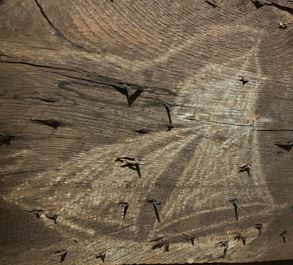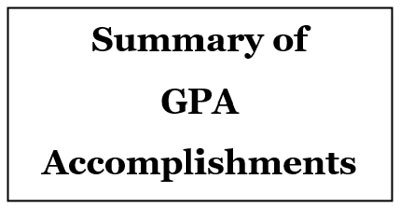The Spring/Summer 2024 Newsletter is now available.
Louise K. Platt – Hollywood Actress
Louise K. Platt was born on 3 Aug 1915, in Stamford, CT, and later resided at Elm Street, North Guilford, CT, with her sister, Jean, and their mother, Mrs. Edna Platt.
Louise was an actress who began her career in summer stock production theatre in 1936. In 1938, she landed a part as Brenda Wayne in the movie I Met My Love Again, starring Joan Bennett and Henry Fonda. Louise performed in several productions at the Chapel Playhouse in Guilford during the summer of 1939. Her “career from bit parts to stardom in Hollywood was followed with pride by Guilford people.” She is best remembered for her role as Mrs. Lucy Mallory in the movie Stagecoach (1939) and performed with actors including John Wayne, Rex Harrison, and Melvyn Douglas. She also performed on Broadway and as Ruth Holden in the soap opera The Guiding Light.
Louise married her second husband, director Stanley Gould at the North Guilford Congregational Church, North Guilford, CT, on 25 Aug 1950. They remained together until his death in 1990. She had two daughters, one from each marriage. Louise died on 6 Sep 2003 at a hospital in Greenport, NY, at the age of 88.

Compiled by Tracy Thompson Tomaselli (2024)
Notes/Sources:
The Chapel Playhouse (1933-1951) was located at 49 Park Street and is currently the First Church of Christ, Scientist. Her sister, Jean, also performed there.
Shore Line Times 16 Feb 1939:1; 13 Mar 1941:7, GVR:1950:51
https://waytofamous.com/20327-louise-platt.html
Fall 2023 Newsletter
Fall 2022 – Newsletter
Letter From the President.
The mission of GPA is to preserve the built and natural environment of our beautiful town.
I would like to share with you some of our latest newsletter.
A Guilford Minute: Henry Whitfield’s 1st fiancé
Would Guilford have been founded by Henry Whitfield if he married Margaret Hardware, his first finance?
Upon graduation from Oxford, Henry Whitfield began the study of law. Circa 1615/1616, Henry Whitfield was engaged to marry Margaret Hardware, the daughter of Henry Hardware. In February 1616, before the marriage took place, Margaret Hardware died. In her will, probated 17 Mar 1616, she bequeathed to Henry Whitfield, “my loving friend and contracted husband, the sum of one hundred and forty pounds, one white ‘beare’ bowl, one Tune (vessel or jar) and cover and three spoons, one piece of gold of three pounds seventeen shillings, one pair of Valence and two cushings of needle work; four towels, two short and two long; three pair of sheets of flaxen of the best; four pillow-beares; one dozen of fringed napkins, four of the best table-cloths; two cupboard cloths; one feather bed, two bolsters, two down pillows, one arras coverlet, four blankets, and all the apparel that was provided for my marriage…Memorandum, that if, after all my debts and legacies are paid, the remainder of my estate be above fifty pounds, that then Mr. Nicholas Byfield have only that fifty pounds, and my loving friend and contracted husband, Mr. Henry Whitfeild, have the rest of my whole estate.”
If Margaret Hardware had not died and their marriage took place, Henry may have continued practicing law. If so, Guilford may not have been founded by him, and the stone house may never have been built for him.
Shortly after the death of Margaret Hardware, Henry Whitfield changed from law to ministry. In 1618, he was ordained a minister of the Church of England. That same year he married Dorothy Sheaffe, a daughter of Thomas Sheaffe, who was a Kentish clergyman. Whitfield became a vicar of St. Margaret’s Church in Ockley, Surrey, England.
During the reign of Charles I, in the early seventeenth century, the Church of England began its persecution of dissidents within the church. Separatists and Puritans alike were censured, and some had to flee England. In 1638, Henry Whitfield, age forty-six at that time, resigned his position as head of the Ockley church. He gathered around him about two dozen families from Surrey and Kent and a few further north in England to emigrate.
The sad untimely death of young Margaret Hardware could have altered the history of Guilford if it had not occurred, and, as a result, many of the descendants of Henry Whitfield and other founding fathers may never have been born.
Compiled by Tracy Thompson Tomaselli (24 Jun 2023)
Newsletter Fall 2022
Newsletter Fall 2021
Ship images inside historic Guilford homes
Ship images inside historic Guilford homes
There are several images of ships appearing on the walls of several historic Guilford homes. Some of these homes were owned by those having ties to some type of maritime enterprise or history, and some of these homes were owned by those who were slave owners.
In the attic at 65 Water Street, is a chalk drawing of a ship. That house was originally located on the corner of Whitfield & Boston Streets and moved to 65 Water Street in 1958. That house was built in 1763 for Elias Cadwell, Jr. who was a slave owner, and it is possible that one of his slaves drew that image.
Another house where two ship images were etched into the wood walls leading to the attic is located at 85 Boston Street. This house, known as the Thomas Burgis II house, was built c. 1735/36. Currently, there is no known record that Thomas Burgis II was a slave owner. However, his father, Thomas Burgis was a native of Yorkshire, England, and was compelled to serve for several years aboard a British man-o-war.
It is also possible that the ship graffiti was done by a later owner or occupant.


85 Boston Street – Ship 1 (etched) 85 Boston Street – Ship 2 (etched)


65 Water Street – Ship 1 (chalk) 65 Water Street – Ship 2 (etched)
Photos taken by Tracy Tomaselli (October 2021)
A Guilford Minute: Early Yale College History
At a General Court, held at Guilford, June 28, 1652, it was “voted, the matter about a College at New Haven for us of this jurisdiction to undergo alone; especially considering the unsettled state of New Haven Town; being publicly declared…to be a place of no comfortable subsistence for the present inhabitants there. But if Connecticut do join, the planters are generally willing to bear their just proportions for erecting and maintaining a College there”.
In October 1701, the Legislature, granted a charter, constituting “Trustees of a Collegiate School in his Majesty’s Colony of Connecticut; and invested them with all the powers which were supposed to be necessary for the complete execution of their trust. The following November, they chose one of their number, Mr. Pierson, rector of the school, and determined that it should be fixed for the present at Saybrook”.
“In the year 1702, the first commencement was held at Saybrook, at which five young gentlemen received the degree of A. M. From this time many debates arose concerning the place where the school should finally be established and continued to agitate the community.” October 17, 1716, with the community still disunited, four of the nine trustees strongly voted against moving the school to New Haven. “The trustees, nerveless, proceeded to hold the commencement, the following year, at New Haven, and to order a college to be erected. It was accordingly raised in October 1717 and finished the following year.” The building, enabled through a number of considerable donations, “was built of wood, one hundred and seventy feet long, twenty-two feet wide, and cost about £1000 sterling. Before it was erected, the students were scattered in various places, as Milford, Killingworth, Guilford, Saybrook, Wethersfield, &c. Soon afterwards, they all removed to New Haven. The number of the students was about 40, the course of education was pursued with spirit, the benefactions increased in number and value, from this time the institution began to flourish.”
Connecticut Historical Collections, History and Antiquities of Every Town in Connecticut. John Warner Barber 1836 p. 146
A Guilford Minute: The U.S. Census – Article 1910 and History
The front page of the Shore Line Times on April 21, 1910, included an article regarding the 1910 census, which at that time was in progress.
 Each time the census has been taken it has included different questions to collect data for different reasons. [Read more…]
Each time the census has been taken it has included different questions to collect data for different reasons. [Read more…]





